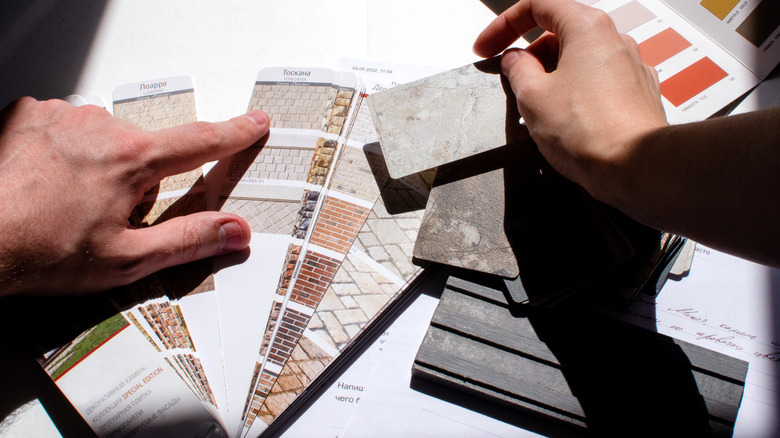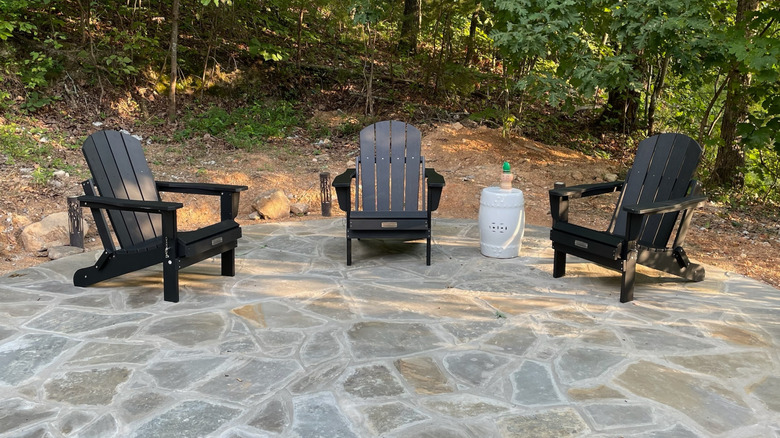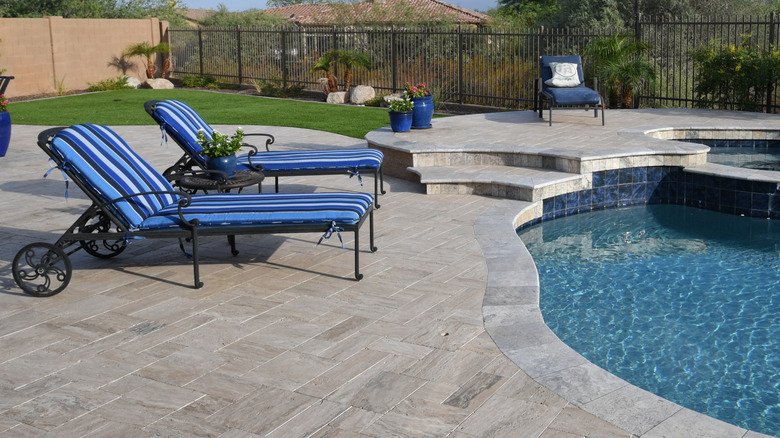The Most Commonly Used Paver Material (And If It's Right For Your Outdoor Space)
When you're considering a paver project to elevate your yard, you have multiple options when it comes to materials. Concrete and brick (or clay) pavers are popular, but natural stone designs featuring flagstone, travertine, or fieldstone are the most common. Determining which is the right type to create the space of your dreams is easier when you understand the strengths and weaknesses of each option.
Fieldstone naturally occurs in gray, tan, brown, and red colors. Its native beauty and rustic feel makes it a popular choice. It's a common material in retaining walls that feature natural stone because of its high level of weather resistance and durability. These same qualities make it a strong option for patio pavers. You don't necessarily need to build a foundation because of the material's sturdiness, giving it an advantage over some other alternatives. However, a weak base does affect stability. It can be especially difficult to balance chairs and tables on them if you're creating an outdoor eating space without a strong foundation.
If you plan to use fieldstone as a paver material for a patio or walking path, make certain to budget enough time for the project. Fieldstones have irregular sizes and thicknesses. It takes some planning to lay each stone for the look you're seeking and the stability you want.
Pros and cons of using flagstone as a paver material
Flagstone is a popular choice as a natural stone and a chic paver that people look for when buying a home. It's been a common paver material since the early 1900s, thanks to its durability and versatility. Flagstone can last for centuries when used in landscaping and architecture.
As you might expect from a material that has such a high level of durability, flagstone is extremely easy to maintain. You don't need to seal it (though you can if you want to), and sweeping and washing are the only required maintenance tasks. Flagstone also works in almost any climate because it doesn't expand and contract in widely varying temperatures. As for aesthetics, it has a natural beauty that adds a charming, rustic feel to your outdoor spaces. It comes in many different colors like gray, brown, red, blue, and green.
Flagstone is heavier than some other materials used as pavers, which can complicate and lengthen the installation process. If you lay it in an area that has significant sun exposure, it will heat up, making it difficult and uncomfortable to walk on in bare feet. If you're creating a patio for sitting and relaxing, you may want to add a shade to protect the stones from soaking up too much heat. It's also slippery when wet, so if you live in a rainy climate, you'll need to keep it dry. And because of the irregular shapes of the stones, installing a flagstone patio or sidewalk takes longer than with other materials that have flat, rectangular shapes. You need a well-established base to provide adequate stability, though.
Advantages and disadvantages of using travertine
Travertine is a natural limestone material that has a textured surface. Ite features many different color patterns within each piece, such as gray, silver, peach, gold, and more. No two stones have a similar color pattern.
In terms of cost, travertine is cheaper to install than other natural stone pavers. It costs around $11 to $23 per square foot for materials and installation, while flagstone and fieldstone average about $15 to $27 and $18 to $25, respectively. You can install travertine pavers in almost any climate, as freeze-and-thaw cycles do not affect the stability of the material. It doesn't fade in areas with significant sun and UV light exposure, either. Travertine is especially useful in areas with regular moisture because it offers slip-resistance. Because of its performance around water, many people will use it next to a swimming pool. It also doesn't heat up in direct sun as much as some other natural stones.
Travertine natural stone pavers are difficult to maintain because you need to seal them every couple of years. Without doing this, you can expect them to show stains from dust and grime that's hard to remove. They also can show etching when exposed to citrus or harsh chemicals because of the porosity of the limestone, which further emphasizes the need for sealing. Installation is challenging with travertine because of its significant weight, meaning most people need to pay a professional to do the work.


